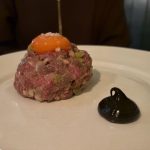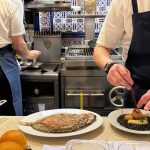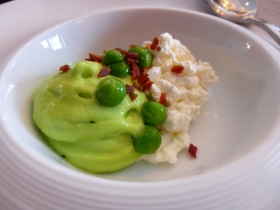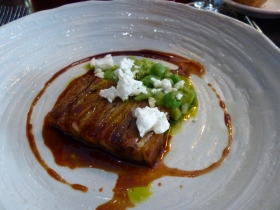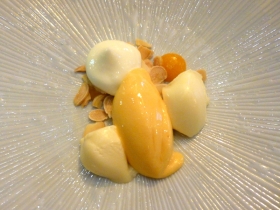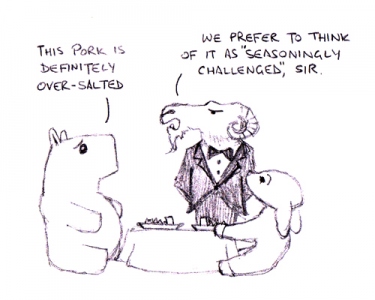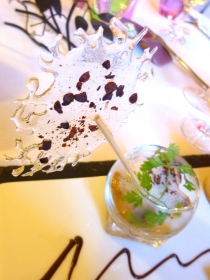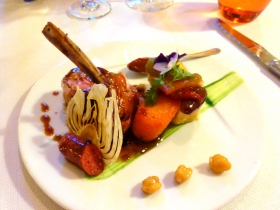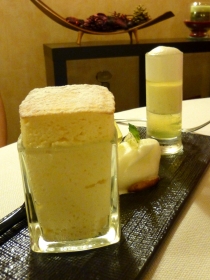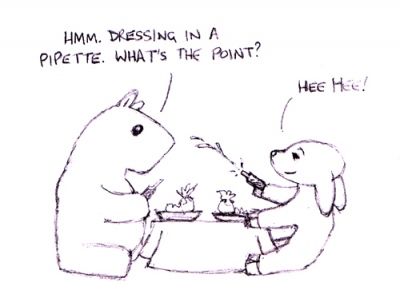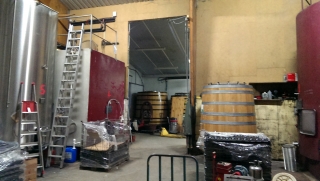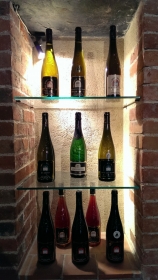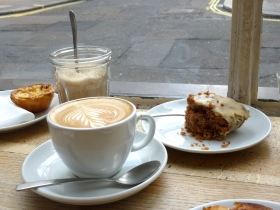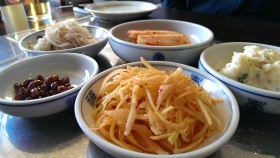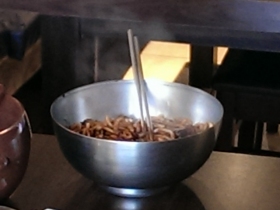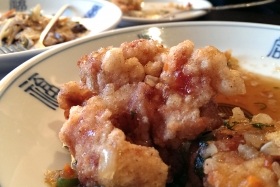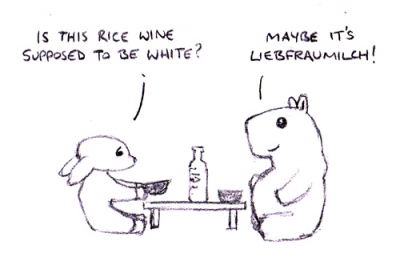Hm. When a customer tells you that a dish is delicious – really delicious – but that the pork shoulder was seriously over-salted, perhaps you shouldn’t get into a debate with them about whether it was or not? Especially when all seven people at the table agree. “Haha, seven against one, I guess you win!” he eventually conceded. Ye-es, I think we do. Perhaps also because we are your customers. But hey, we had a great meal and our waiter was generally friendly and good fun, he just stepped over the line that one time.
We were dining at Alimentum, Cambridge’s most central Michelin-starred restaurant, and enjoying a ten-course tasting menu that was definitely one of my top three dining experiences this year. The restaurant is oddly situated on a commercial road within spitting distance of Nando’s and the local multiplex cinema. Inside the decor is wine bar classy, with plenty of black and the odd splash of red or gold. Our table had windows into the kitchen for extra entertainment, which was great until we spotted the one chef who tasted absolutely everything he plated, with his fingers, in between occasionally scratching his head and wiping his brow. No idea whether this is normal but, testimony to the great cooking, it didn’t put us off!
The little amuse of pea mousse and cottage cheese that opened the batting was ridiculously good, perhaps because it was such a hot summer day outside. The next dish of asparagus and chanterelles with a clean goat cheese sorbet kept up the quality both in good looks and taste. Smoked eel with crisp apple cubes and a grating of horseradish and truffle couldn’t really go wrong. Alimentum puts out very pretty plates of food and that’s definitely part of the joy. Our final starter was a gooey, crispy, unctuous little tranche of lamb belly with a more robust pea puree and a little crumble of goat cheese.
The fish course was a lovely plump piece of halibut with textures of butternut squash and caviar. The salty punch of the caviar saved this dish from mediocrity. Meh, I just don’t rate butternut squash unless it has griddled black tramlines or is made into soup and properly overwhelmed with roasted garlic.
And so to the porky main, which was superb. The whole table mmmoo’d like a herd of contented cattle. I think the chief delight was a black pudding puree that was just deep and rich with animaly, irony goodness. I’d love an enormous tube of this that I could spread on toast, bread, croissants or indeed my toothbrush! The pork medallions were pink, squidgy and perfect in their salty wrap of ham, the gravy sublime. Instead of potato we had a couple of thick slices of sturdy swede and I smiled because I wouldn’t have thought of it and it worked perfectly. The sticky pulled shoulder was tasty but criminally over-salted, but who cares?
Odd little experiment of a cheese course. A dollop of Epoisses on a spoon, in bowl of dark onion soup with cubes of apple and truffle powder. The tastes combined very splendidly, and top marks for invention, but I think a tiny slice of crispy French toast with it would have brought a necessary texture and starch.
Loved the pre-dessert, lemongrass mousse and ginger beer granita. Great combo. The first dessert was superb, a mango sorbet with honey mousse, toasted almonds and a slightly marshmallowy vanilla cream described as a “Japanese panna cotta”. I wish I’d remembered the proper name to look for a recipe, as it was magical. Second pud was crumbled hazelnut cake with chocolate sorbet, coffee mousse and meringue. Nice cake but couldn’t match what had gone before!
Alimentum offers inventive, delicious and beautifully presented food. It’s a much more satisfying experience than a whole tranche of other 1-star fine dining establishments around the country, and than its own peculiar location would suggest. This 10 course tasting menu was £85, which strikes me as about right, and the wine menu offers some very good value options. I like a sommelier who, when you ask their opinion of two bottles, opts for the cheaper one. The menu was very well balanced, we left feeling replete rather than stuffed. Yes, Cambridge definitely has a top-class destination in Alimentum.



